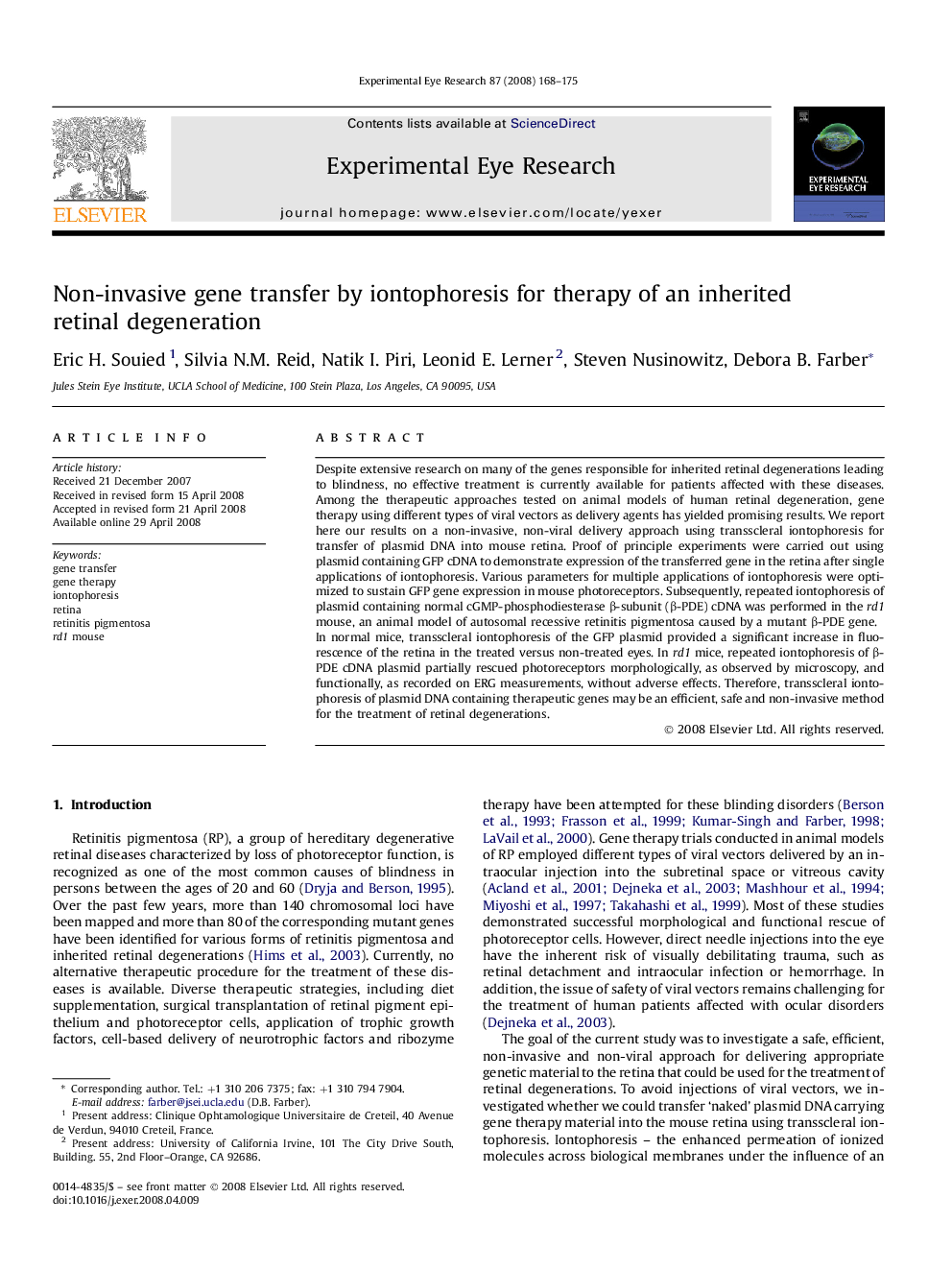| Article ID | Journal | Published Year | Pages | File Type |
|---|---|---|---|---|
| 4012058 | Experimental Eye Research | 2008 | 8 Pages |
Despite extensive research on many of the genes responsible for inherited retinal degenerations leading to blindness, no effective treatment is currently available for patients affected with these diseases. Among the therapeutic approaches tested on animal models of human retinal degeneration, gene therapy using different types of viral vectors as delivery agents has yielded promising results. We report here our results on a non-invasive, non-viral delivery approach using transscleral iontophoresis for transfer of plasmid DNA into mouse retina. Proof of principle experiments were carried out using plasmid containing GFP cDNA to demonstrate expression of the transferred gene in the retina after single applications of iontophoresis. Various parameters for multiple applications of iontophoresis were optimized to sustain GFP gene expression in mouse photoreceptors. Subsequently, repeated iontophoresis of plasmid containing normal cGMP-phosphodiesterase β-subunit (β-PDE) cDNA was performed in the rd1 mouse, an animal model of autosomal recessive retinitis pigmentosa caused by a mutant β-PDE gene.In normal mice, transscleral iontophoresis of the GFP plasmid provided a significant increase in fluorescence of the retina in the treated versus non-treated eyes. In rd1 mice, repeated iontophoresis of β-PDE cDNA plasmid partially rescued photoreceptors morphologically, as observed by microscopy, and functionally, as recorded on ERG measurements, without adverse effects. Therefore, transscleral iontophoresis of plasmid DNA containing therapeutic genes may be an efficient, safe and non-invasive method for the treatment of retinal degenerations.
